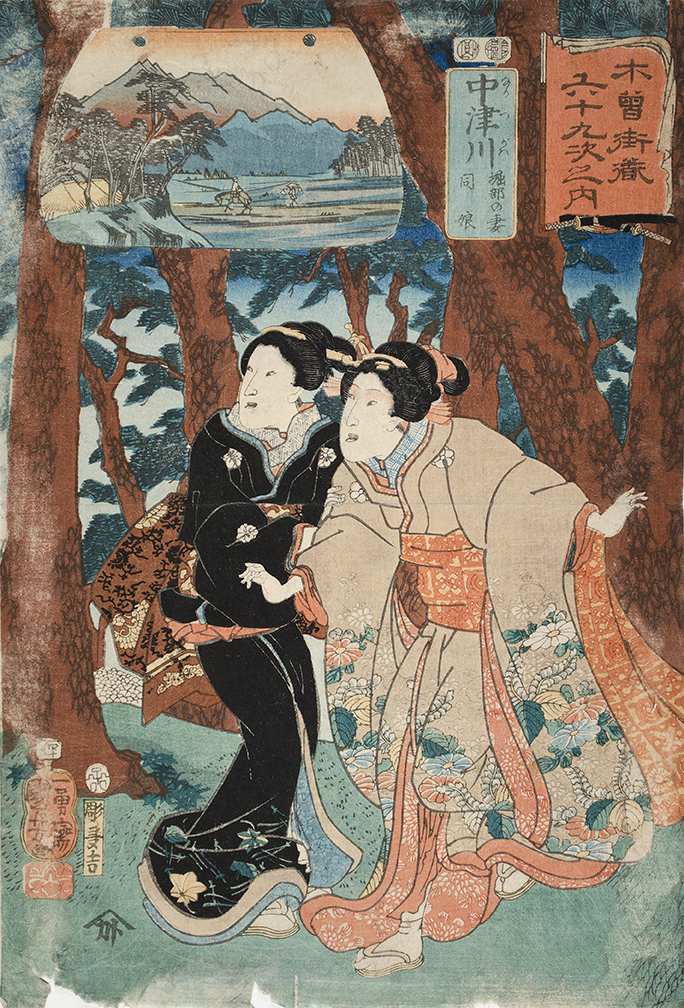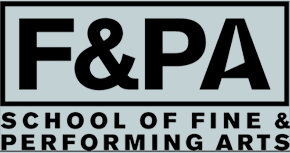The Ukiyo-e Movement: Gems from the Dorsky Museum Collection of Japanese Woodblock Prints
Curated by Elizabeth Brotherton, Associate Professor, Art History, SUNY New Paltz
August 28 – December 8, 2019
Seminar Room

Kitagawa Utamaro, Untitled (from the series “Twelve Types of Women’s Handicraft”), 1798–1799, woodcut, Samuel Dorsky Museum of Art, gift of Dr. Hugo Munsterberg, 1966.009
Ukiyo-e, translated as “pictures of the floating world,” while not strictly a movement in the sense of being the product of closely aligned artists setting out to make an artistic statement, do comprise an evolving body of works that could only have been produced in the unique context of Edo period Japan (1600–1868) with its mingling of newly confident artisans, leisured samurai, and a growing urban audience.
This exhibition, drawn from the Dorsky Museum collection and held in conjunction with the 2019 meeting of the New York Conference on Asian Studies, includes a range of ukiyo-e woodblock prints that were mostly produced during the later stages of ukiyo-e, when the shifting function of the prints, combined with greater censorial control of their content by the government, brought about an increasing variety in type and subject matter. Between roughly 1750 and 1850, ukiyo-e prints moved well beyond the representation of their core subject matter of courtesans and actors (through which they helped create a celebrity culture with similarities to our own), and broadened out to include such themes as literary illustration and commentary, traditional folk tales (whose illustration could bear political implications), local landscapes, and eccentric self-expression.
The Ukiyo-e Movement: Gems from the Dorsky Museum Collection of Japanese Woodblock Prints
Curated by Elizabeth Brotherton, Associate Professor, Art History, SUNY New Paltz
August 28 – December 8, 2019
Seminar Room

Kitagawa Utamaro, Untitled (from the series “Twelve Types of Women’s Handicraft”), 1798–1799, woodcut, Samuel Dorsky Museum of Art, gift of Dr. Hugo Munsterberg, 1966.009
Ukiyo-e, translated as “pictures of the floating world,” while not strictly a movement in the sense of being the product of closely aligned artists setting out to make an artistic statement, do comprise an evolving body of works that could only have been produced in the unique context of Edo period Japan (1600–1868) with its mingling of newly confident artisans, leisured samurai, and a growing urban audience.
This exhibition, drawn from the Dorsky Museum collection and held in conjunction with the 2019 meeting of the New York Conference on Asian Studies, includes a range of ukiyo-e woodblock prints that were mostly produced during the later stages of ukiyo-e, when the shifting function of the prints, combined with greater censorial control of their content by the government, brought about an increasing variety in type and subject matter. Between roughly 1750 and 1850, ukiyo-e prints moved well beyond the representation of their core subject matter of courtesans and actors (through which they helped create a celebrity culture with similarities to our own), and broadened out to include such themes as literary illustration and commentary, traditional folk tales (whose illustration could bear political implications), local landscapes, and eccentric self-expression.
SUNY New Paltz 1 Hawk Drive, New Paltz, NY 12561
845.257.3844
For more information contact us at sdma@newpaltz.edu

